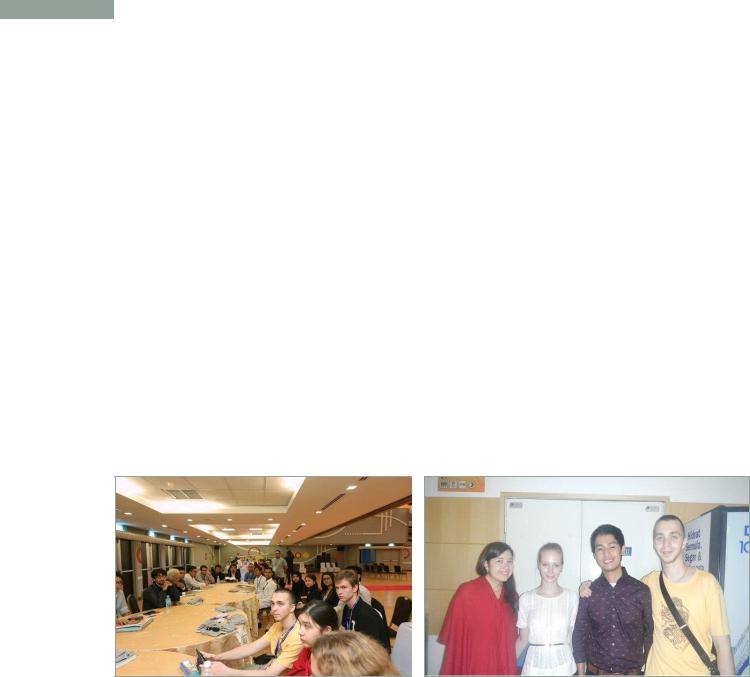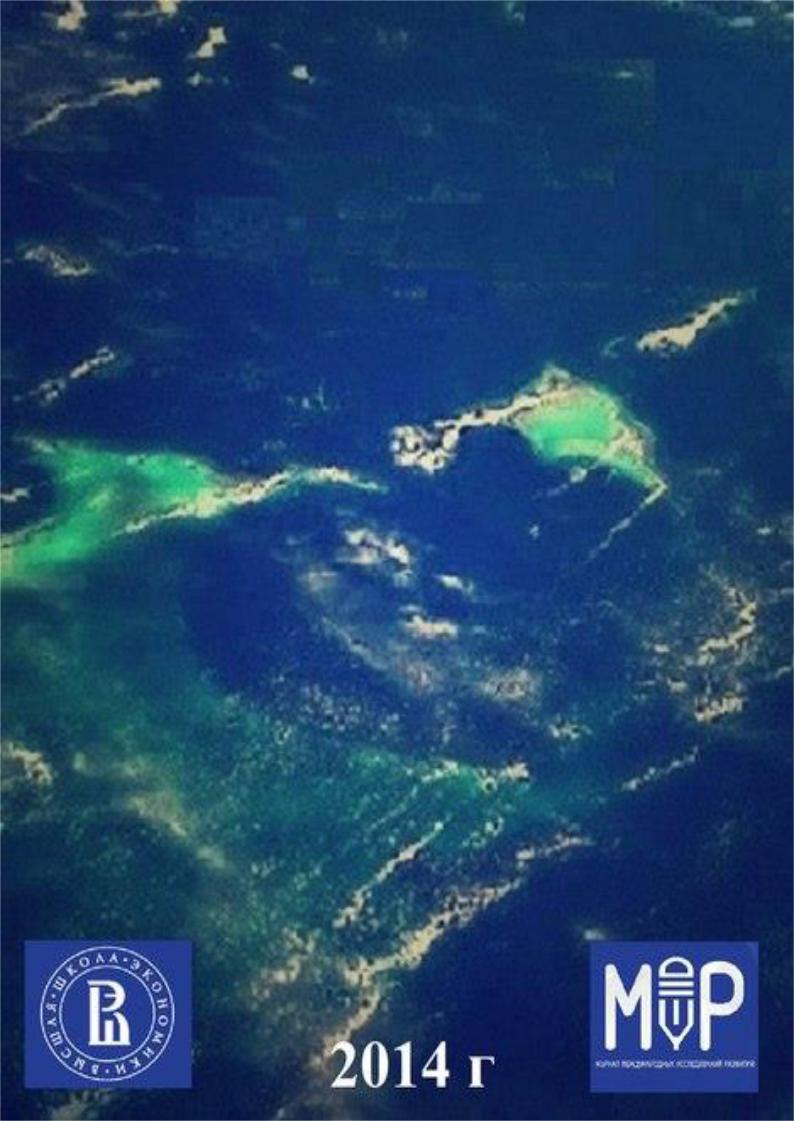
MIR_3_final
.pdf
Журнал международных исследований развития (МИР). №3. 2014
Nevertheless, current policies are not perfect. According to some studies, China’s unilateral liberalization ―has stalled‖50. Though reforms are ongoing, economic nationalism is dominant and prevents further liberalization. Despite the effective strategy of ―smart‖ concessions when joining the WTO, China’s current bargaining over ―reciprocal concessions‖ leads to expansion of industrial policy and prevents unilateral opening of markets.
Ultimately, the transitional stage of the Chinese economy together with its lagging behind in terms of technologies puts China in the position when it has to develop policies ―with Chinese characteristics‖ that would enable the country to use its advantages and mitigate the negative effects. As long as there was barely a country that China could take as an example, it is looking for new approaches and tools in international trade policies compatible with its growth model.
This approach is sometimes referred to as ―liberal protectionism‖. He does not consider the concessions made during the final round of WTO negotiations to be a sign of ―complete dismantling of the former foreign trade system based on government intervention‖51, but rather calls liberalization in China ―dosed‖ (proportional).
Salitsky’s assumptions about the specific type of policy that China exercises in foreign trade are consistent with the theoretical discourse in international political economy which generally revolves around different definitions of ―economic nationalism‖. There is a concept called ―liberal economic nationalism‖ which provides the theoretical framework for Salitsky’s perception of Chinese policies as a separate strand in international trade theory.
Chinese ―liberal protectionist strategy‖ appears to be generally quite effective. The arguably successful development of the Chinese economy as a whole and increasing exports, total trade volume and FDI all signify success in trade in the developing country with its specific
―Chinese characteristics‖.
6. CONCLUSION – CAN LIBERAL AND ECONOMIC NATIONALIST POLICIES
COEXIST?
China’s foreign commercial policy represents a combination of liberal and protectionist tools which are consistent with both opening the economy and promoting ―self-reliance‖. There is no pure liberalization or autarky-like protectionism, but it is a combination of the two with one outweighing the other at different times and under different circumstances. Trade policy becomes more complex and is aimed at striking the right balance between opening up to the international markets and supporting national producers.
50Sally, R. Chinese Trade Policy After (Almost) Ten Years in the WTO: a post-crisis stocktake. ECIPE Occasional paper.2011.p.2
51Salitsky, A. M. China and the WTO: Liberal Protectionism. URL: www.wto.ru/documents.asp?f=china&t=14
51

Журнал международных исследований развития (МИР). №3. 2014
But does China manage to balance the two properly? The effectiveness of its policies may
be evaluated by the country’s comparative advantage, for example. In China the well-structured
industrial policy enabled moving on from specialization in raw materials extraction and
production onto producing labor-intensive goods in the 1990s, and a similar transition into high-
tech capital-intensive production started in the 2000s. These changes represent China’s progress
up the comparative advantage stages of trade specialization, which exemplifies effectiveness of
trade policies. While liberalization helps realize the comparative advantages of the Chinese
economy on the global market, economic nationalism utilizes the country’s internal capacities.
To sum up, China’s international trade policies are aimed at striking the balance between
liberalism and protectionism. While it might not always be the right balance, the effort to achieve
it is more than sufficient. At present, the approach employed by China falls within the bounds of the new interpretation of economic nationalism with an emphasis on ―its nationalist content‖52
that makes the emergence of the new ―liberal economic nationalism‖ policy possible. And it is
this strategy exactly that is applicable to China.
REFERENCES
Balassa, B. A. The Newly Industrializing Countries in the World Economy.1981. New York: Pergamon press. pp. 1978-1990
Gelbras, V. G. Import Substitution and Export Orientation of China’s Economy. Journal of World Economy and International Affairs. 1999. No. 7. (in Russian). (Гельбрас В. Г.
Импортзамещение и экспортная ориентация экономики КНР).
Helleiner, E. Economic nationalism as a challenge to economic liberalism? Lessons from the 19th century. International Studies Quarterly. 2002. No.46(3), pp.307-329.
Mozias P., Yakovleva V. China’s Foreign Trade Policy after the Accession to the WTO. Journal of World Economy and International Affairs. 2009. No. 12. (in Russian). (Мозиас, Яковлева.
Внешнеторговая политика Китая после присоединения к ВТО).
Salitsky, A. M. China and the WTO: Liberal Protectionism. URL: www.wto.ru/documents.asp?f=china&t=14 (in Russian) (Салицкий А. М. Китай в ВТО:
Либеральный протекционизм)
Sally, R. Chinese Trade Policy After (Almost) Ten Years in the WTO: a post-crisis stocktake.
ECIPE Occasional paper.2011. p. 2.
52 Helleiner, E. (2002). Economic nationalism as a challenge to economic liberalism? Lessons from the 19th century.
International Studies Quarterly, 46(3), p.307
52

Журнал международных исследований развития (МИР). №3. 2014
Представители проекта журнала «МИР» на международных стажировках
Гальченко Евгений
Генеральный директор в Англии!
В рамках своей командировки в Лондон в ноябре-декабре 2014 года мне удалось установить контакт между нашим Журналом и Университетом London Metropolitan, достигнув договоренности с координатором программы двойных дипломов в сфере государственного управления Патом Греем. Кроме того, я познакомился с главными редакторами внутриуниверситетских журналов, которые с радостью поделились опытом создания, «раскрутки» и развития подобных проектов. Безусловно, такой опыт будет полезен и молодому Журналу МИР, хотя и требует адаптации к нашим реалиям. Могу сказать, что поездка прошла не зря – уже несколько иностранных студентов заинтересовались публикацией в рубрике ―International Approach‖ Журнала МИР, и в настоящее время готовят свои статьи. Так держать!
Роман Файншмидт
Что же такое АСЕАН? Не каждый в России знает что это. Более того, российский бизнес также не всегда имеет общее представление о данной интеграционной группировке 10 стран Юго-Восточной Азии.
На прошедшем с 17 по 18 октября в Куала-Лумпуре (Малайзия) молодѐжном саммите Россия-АСЕАН студенты ведущих российских вузов, имеющие специализацию в области интеграции АСЕАН или стран еѐ составляющих, обсудили со своими коллегами из вузов стран региона перспективы развития взаимных экономических связей, а также возможные векторы сотрудничества в сфере медиакоммуникаций и образования, в рамках чего были выработаны совместные проекты такие, как, например, создание интернет-сайта, репрезентующего ассортимент продукции той или иной страны блока, а также предоставляющий конкретные его характеристики и возможности для его реализации на российском рынке.
Следует выделить, в составе делегации РФ приняли участие студенты 3 курса факультета мировой экономики и мировой политики НИУ ВШЭ: Бутченко Алина и Файншмидт Роман, представившие точки зрения по вопросам взаимодействия России со странами ЮВА в области инвестиционного сотрудничества в различных секторах экономики.
53

Журнал международных исследований развития (МИР). №3. 2014
Приглашение к публикации
Приглашаем студентов к публикации на страницах журнала статей, а также других научных работ различных жанров: рецензий, обзоров, комментариев, соответствующих тематике и разделам издания.
Редакция журнала публикует оригинальные материалы, способные стать основной для дальнейших разработок, внести вклад в теорию и практику, отражающую тематику издания.
Требования к публикуемым материалам:
1.Для публикации принимаются ранее не опубликованные авторские материалы – статьи, обзоры, комментарии и т.д.
2.Основные требования к содержанию публикуемых работ:
-актуальная теоретическая или практическая проблема, соответствующая тематике издания;
-четко структурированный материал, отражающий аналитические выводы, пути решения проблемы;
-наличие библиографии.
3. Условия оформления авторских материалов
При отправке файлов с материалами в редакцию стоит включать следующие элементы:
-сведения об авторе;
-заглавие материала;
-аннотация (50 – 60 слов) и ключевые слова (не более 6 слов / словосочетаний).
-оригинал авторского текста (с приложениями – при наличии).
а) Требования к объему: Объѐм, как правило, составляет от 2500 до 6000 слов (5–10 страниц).
Текст должен быть отправлен в формате Word:
поля страницы – 2,5 см;
шрифт Times New Roman;
кегль 12; через 1,5 интервала.
б) Для выделений можно использовать курсив и жирный шрифт.
в) Сведения об авторе/составителе включают в себя:
-фамилию, имя и отчество полностью;
-место работы и/или учѐбы, включая подразделение (кафедра, факультет);
-контактную информацию (адрес электронной почты или другие контакты).
4. Оформление библиографии
Авторские материалы должны обязательно сопровождаться библиографическими ссылками (ГОСТ 7.05–2008). Текст сносок оформляется шрифтом Times New Roman, кегль 10, через 1 интервал.
Материалы для публикации следует направлять по электронному адресу: global@hse.ru
Адрес: г. Москва, ул. Мытная, д. 46, стр. 5, офис 305
Телефон: +7 (495) 772-95-90 *22228
54

